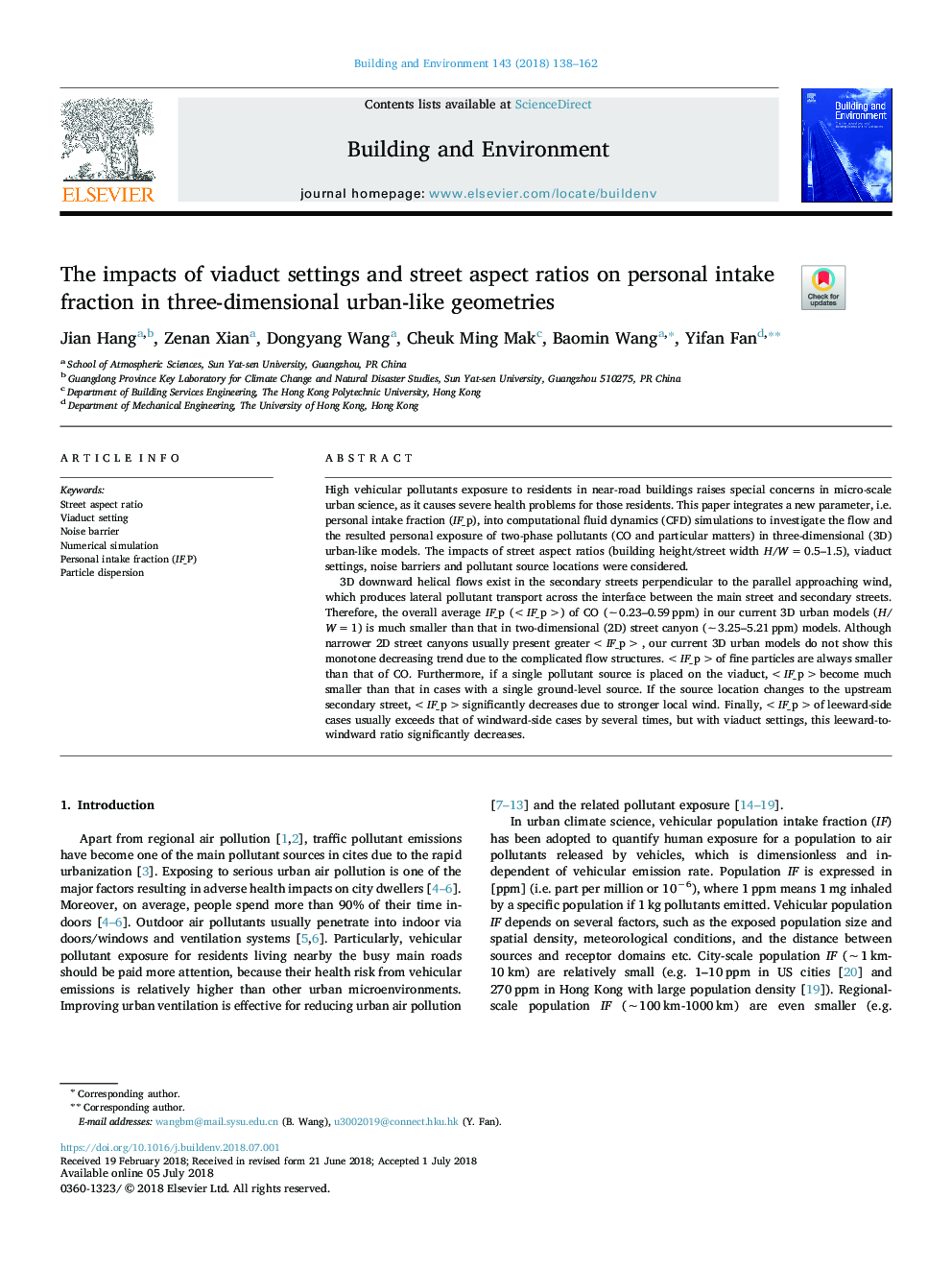| Article ID | Journal | Published Year | Pages | File Type |
|---|---|---|---|---|
| 6696508 | Building and Environment | 2018 | 25 Pages |
Abstract
3D downward helical flows exist in the secondary streets perpendicular to the parallel approaching wind, which produces lateral pollutant transport across the interface between the main street and secondary streets. Therefore, the overall average IF_p () of CO (â¼0.23-0.59â¯ppm) in our current 3D urban models (H/Wâ¯=â¯1) is much smaller than that in two-dimensional (2D) street canyon (â¼3.25-5.21â¯ppm) models. Although narrower 2D street canyons usually present greater , our current 3D urban models do not show this monotone decreasing trend due to the complicated flow structures. of fine particles are always smaller than that of CO. Furthermore, if a single pollutant source is placed on the viaduct, become much smaller than that in cases with a single ground-level source. If the source location changes to the upstream secondary street, significantly decreases due to stronger local wind. Finally, of leeward-side cases usually exceeds that of windward-side cases by several times, but with viaduct settings, this leeward-to-windward ratio significantly decreases.
Related Topics
Physical Sciences and Engineering
Energy
Renewable Energy, Sustainability and the Environment
Authors
Jian Hang, Zenan Xian, Dongyang Wang, Cheuk Ming Mak, Baomin Wang, Yifan Fan,
